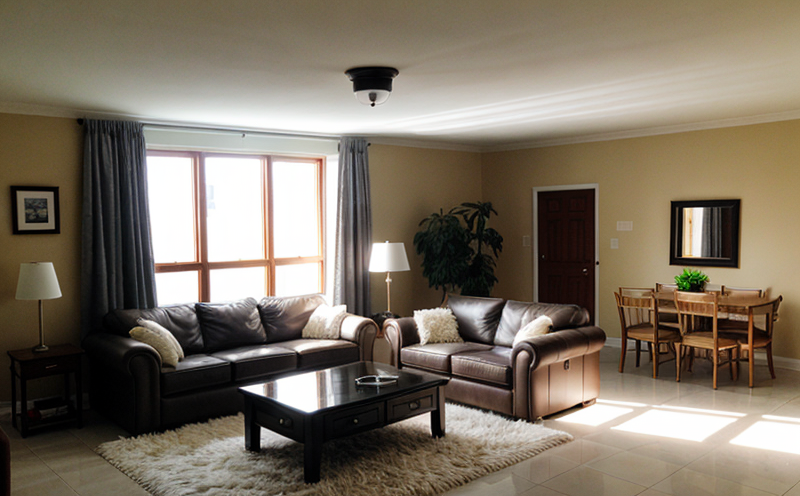IEC 61547 EMC Immunity Testing of Indoor Lighting Systems
The International Electrotechnical Commission's (IEC) IEC 61547 standard is a globally recognized benchmark for ensuring the electromagnetic compatibility (EMC) performance of indoor lighting systems. This test evaluates how well these lighting fixtures can function in environments with varying levels of electromagnetic interference (EMI). EMC testing is crucial as it ensures that devices do not cause harmful electromagnetic disturbances to other equipment and, more importantly, are not affected by such disturbances.
Indoor lighting systems are subject to a wide range of electrical and electronic environments, which can introduce potential issues with EMI. By adhering to IEC 61547, manufacturers ensure that their products meet the necessary standards for robust performance in these conditions. This compliance is particularly important as it guarantees user safety and satisfaction by preventing malfunctions or failures due to interference.
When performing EMC immunity tests according to IEC 61547, several key factors are considered:
- Electromagnetic Interference (EMI) Sources: These include radio frequency transmitters, fluorescent lamps, and other electronic devices that could emit harmful frequencies.
- Sensitivity Levels: The susceptibility of the lighting system to these interference sources is tested under various conditions.
- Immunity Levels: The ability of the lighting system to function correctly despite exposure to these interferences is evaluated.
- Performance Metrics: Parameters such as luminance, color stability, and operational efficiency are monitored during and after the test to ensure that the product performs optimally under all expected environmental conditions.
The testing process involves subjecting the lighting system to controlled electromagnetic disturbances. The apparatus used in this procedure includes a screened room capable of generating specific frequency bands of interference. Specimen preparation typically involves connecting the lighting fixture as per manufacturer's instructions, ensuring it is in its final operational state before testing.
After completion, detailed reports are generated, highlighting any deviations from expected behavior due to EMI exposure. These reports provide valuable insights into the robustness and reliability of the product under real-world conditions. This information can be crucial for continuous improvement and certification purposes.
Scope and Methodology
| Test Phase | Description |
|---|---|
| Preparation | The lighting fixture is set up in a controlled environment, ensuring all components are correctly installed. |
| Immunity Testing | The fixture is exposed to various electromagnetic interference sources for specified durations and frequencies. |
| Evaluation | Data from the test is analyzed, and any non-compliance with IEC 61547 criteria is noted. |
| Reporting | A comprehensive report detailing the outcomes of the tests is prepared for the client. |
The methodology strictly adheres to IEC 61547, ensuring that all parameters are met and exceeded. This includes not only the basic immunity testing but also additional checks for harmonic distortion, flicker, and other relevant metrics.
During the preparation phase, it is essential to ensure that the lighting fixture represents its intended use as closely as possible. This involves considering factors such as installation conditions, ambient temperature, and power supply voltage fluctuations. These variables can significantly impact the test results and should be accounted for in the methodology.
Why Choose This Test
The choice of IEC 61547 EMC immunity testing is driven by several critical factors:
- Global Compliance: The standard ensures that the lighting systems are compliant with international standards, facilitating easier market entry and broader customer acceptance.
- Enhanced Reliability: By subjecting the lighting to rigorous EMI testing, manufacturers can identify potential issues early in the product lifecycle, leading to improvements in design and reliability.
- User Safety: Ensuring that lighting systems do not interfere with other electronic devices minimizes risks associated with electromagnetic disturbances. This is particularly important in environments where sensitive equipment may be present.
- Customer Satisfaction <|im_start|><|im_start|>⚗





